
Hildegard’s Dilemma
Oct 14th
Hildegard von Bingen, a 12th century nun was celebrated for her intellect, writings, and notably for her extraordinary visions – also known as migraine auras. Ask any migraineur about the scintillating scotomas preceding a migraine, and you’re likely to receive a flinching look in return. Migraines with aura are chronic headaches characterized by specific neurological symptoms – visual disturbances, nausea, sensitivity to light, sounds, smells, and usually accompanied with an unilateral blinding headache—the hallmark TKO of migraines. Now it appears that female migraineurs might find an unexpected silver lining in the migraine cloud – researchers at the Fred Hutchinson Cancer More >
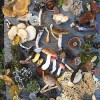
Diverse Proteins
Oct 14th
The instructions for life are carried in the DNA of our cells. All day long, our cells read the information in our DNA and make proteins. While DNA contains recipes for how life works, proteins are molecules that I consider the “doers” in our cells.
Protein is a broad category that includes enzymes and hormones. When you eat an apple, your body produces enzymes to break down that apple and build new products for your body. If you have a lot of glucose (a type of sugar) in your blood, the cells in your pancreas will read the gene for insulin More >
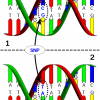
The Future of Medicine
Oct 13th
Emerging DNA technologies continue to offer us many new insights into our genome, and its implications on human disease. One area that is currently under much scrutiny is how different patients are responding differently to certain drug treatments. Researchers are now finding that some people have a genetic predisposition to how they will react to a drug. If there is some way that we could detect this in the doctor’s office as they are writing the prescription, it would help save time and lives as we try to combat these diseases.
The Imperial College London and its affiliate-company DNA Electronics have More >

The fight against Huntington’s
Oct 9th
Huntington’s disease (HD) is an inherited disease, characterized by the wasting away of certain nerve cells in the brain. If a person inherits only one mutated copy of the Huntingtin gene they develop the disease. One who is born with the defective gene responsible for the disease may not show any of the symptoms until middle age. Symptoms could consist of balance issues, uncontrolled movements or clumsiness. In the progression of the disease one may also loose the capability to talk or even walk.
Medivation, Inc. and Pfizer Inc. have publicized that the start of phase three trials in the usage More >
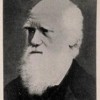
Eugenics Archive Extremes
Oct 8th
The Nobel announcements always get people buzzing here at CSHL. This week was particularly exciting because Carol Greider, one of the Physiology or Medicine winners, graced the Lab campus for some years. As another example of science leaked into the mainstream, I learned about a NOVA dramatization on Charles Darwin, as well as a theatrical movie that initially didn’t make it to the US due to its controversial inclusion of the creationism debate.
As someone who only has one foot in this science world, I’ve wondered how those outside it look on at the celebrations and science story telling. Do they More >
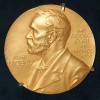
Ribosome Discoveries Recognized in 2009 Nobel Prize in Chemistry
Oct 7th
The 2009 Nobel Prize in Chemistry will be shared between Venkatraman Ramakrishnan, Thomas A. Steitz and Ada E. Yonath for discovering how ribosomes function at the atomic level.
Ribosomes are molecular machines composed of RNA and protein that perform the critical function of translating messenger RNA (mRNA) into protein. In other words, they transform the genetic code from a static list of instructions into dynamic entities that constitute life. As the Nobel Foundation’s announcement eloquently put it, “they build and control life at the chemical level.”
In a tour-de-force of atomic chemistry, Ramakrishnan, Steitz, and Yonath used X-ray crystallography to locate each More >
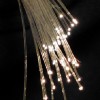
2009 Nobel Prize in Physics goes to Kao, Smith and Boyle
Oct 6th
Telecommunications were the subject of the 2009 Nobel Prize in Physics. This year’s award will be split between two discoveries that have had a broad impact on contemporary life – fiber optics and charge-coupled device (CCD) technology.
Charles Kuen Kao will receive half the Prize for laying the foundations of the modern fiber optic industry. In 1966, he calculated how to transmit light signals over long distances using glass fibers. To that point, traditional materials had only been capable of transmitting signals over short distances (i.e. 50 feet). Kao’s discovery demonstrated how to send signals over many miles. Four years later, More >
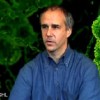
Defining the Enemy, Advances in Autsim Research
Oct 5th
For most people the ideas of genes and traits recall a few scattered facts from their primary schooling on Mendel and his pea plants; short ones, tall ones, Punnett squares and the like. When it comes it comes to simple traits, like eye color, people may think that it is only a matter of some combination of dominant or recessive genes, i.e. BB, Bb, or bb. As it turns out, eye color is more genetically complex than this. So one could imagine that solving the genetic mysteries behind autism are even more complex.
In a recent review of autism research, Brent More >

Blackburn, Greider and Szostak share Nobel for Telomeres
Oct 5th
Nobel Prize week kicked-off today with the announcement of the Prize in Physiology or Medicine. As predicted on these pages, Elizabeth Blackburn, Carol Greider, and Jack Szostak shared the award for discovering telomeres and telomerase. This is particularly good news for Cold Spring Harbor Laboratory, which was home to Carol Greider when she made the pivotal discovery of isolating the RNA gene that encodes for the telomeric template.
Carol Greider isolated the Telomeric Gene while at Cold Spring Harbor Lab
What is a Telomere? A telomere is a region (or cap) of repetitive DNA at the end of every chromosome that basically More >

Countdown to the 2009 Nobel Prizes…
Oct 1st
Nobel Prize week will kick-off on Monday (October 5th) with the announcement of the Prize in Physiology or Medicine. The prizes for Physics and Chemistry will follow on successive days, as the science world is treated to its annual brush with celebrity. Unlike the Oscars, however, we do not know the list of nominees and the whole election process is rather secretive. Deprived as we are of a list of formal candidates, I think it best to resort to wild speculation, conjecture, and rumor.
Physiology and Medicine…
The main contenders: Elizabeth Blackburn, Carol Greider, and (possibly) Jack Szostak The discovery: Telomeres and telomerase More >
